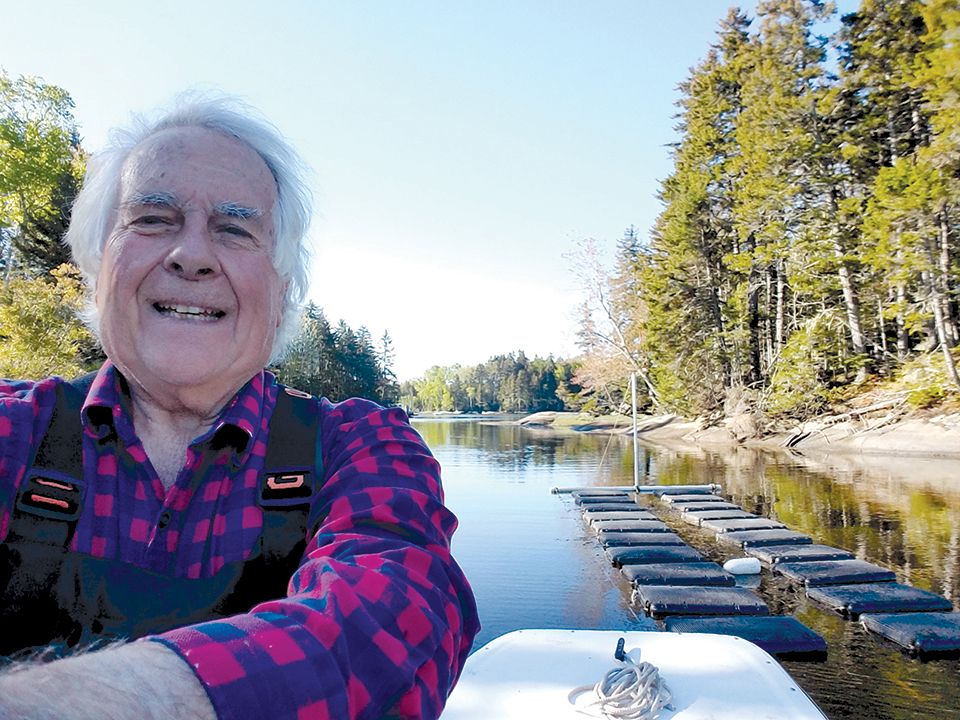Jim Balano is reluctant to label himself a fisherman. “I would feel like a fraud calling myself a fisherman at this point,” says Balano, who lives on Monhegan Island, 12 nautical miles off mainland Maine. “The number of oysters I grow is laughable, and it’s a new experiment and still in its first year.”
But at 73 years old and being a fifth-generation master mariner, saltwater practically runs through his veins. His father held a Master Mariner license and lobstered in Port Clyde, Maine, after returning from World War II. His grandfather captained the four-masted schooner R.W. Hopkins as a 19-year-old. His grandmother, Dorothea Moulton, spent years at sea alongside her husband and her diary was edited into “The Log of the Skipper’s Wife.”
Balano first went to sea as an 18-year-old, working aboard Danish, Norwegian and American ships. “I was supposed to start college at Colby in 1962,” says Balano, “but got stuck in West Africa on a Norwegian ship and didn’t start until 1963. I put myself through Colby by shipping and worked a semester or two at sea, alternating with a semester or two at Colby — finally graduating in 1971.” After graduating, he took a job offshore lobstering with Bobbie Brown, who went on to own the Andrea Gail and Hannah Boden made famous in “The Perfect Storm.”
In the 1970s, Balano lived on Monhegan Island and was sternman before buying his own boat, fishing 600 traps. In 1979, he sold his gear and moved to New York city to study at Seamen’s Church Institute. Then in 1987, he got involved in global shipping, helping to transport $25 billion worth of Toyotas from Japan to the West Coast over 20 years.
After retiring in 2013, Balano has shifted seamlessly from the global shipping world into his own backyard, where he is cultivating oysters. “I’ve always been interested in aquaculture,” he says.
His wife’s house on Wheeler’s Bay in St. George has a landlocked cove where the water warms enough in the summer to promote rapid oyster growth.
“We applied for four 400-square-foot limited purpose aquaculture sites and purchased 8,000 9-13mm spat from Muscongus Bay Aquaculture,” he says. “We have a float on a mooring outside the ice line for winter storage. We just moved the oysters back to the cove after overwintering and are pleased that they wintered well with minimal mortality.”
During the inaugural season, Balano’s oysters grew from about a half-inch to 2 inches. Balano says he hopes to have his first market size oysters from the original 8,000 by August or September, although he intends to keep things simple.
“At 73 years, we’re a little long in the tooth for a large commercial enterprise, and would like to keep things on a scale where people buy oysters by subscription within the local area,” he says.
National Fisherman’s “Who we are” briefly profiles fishermen from fisheries around the United States.







